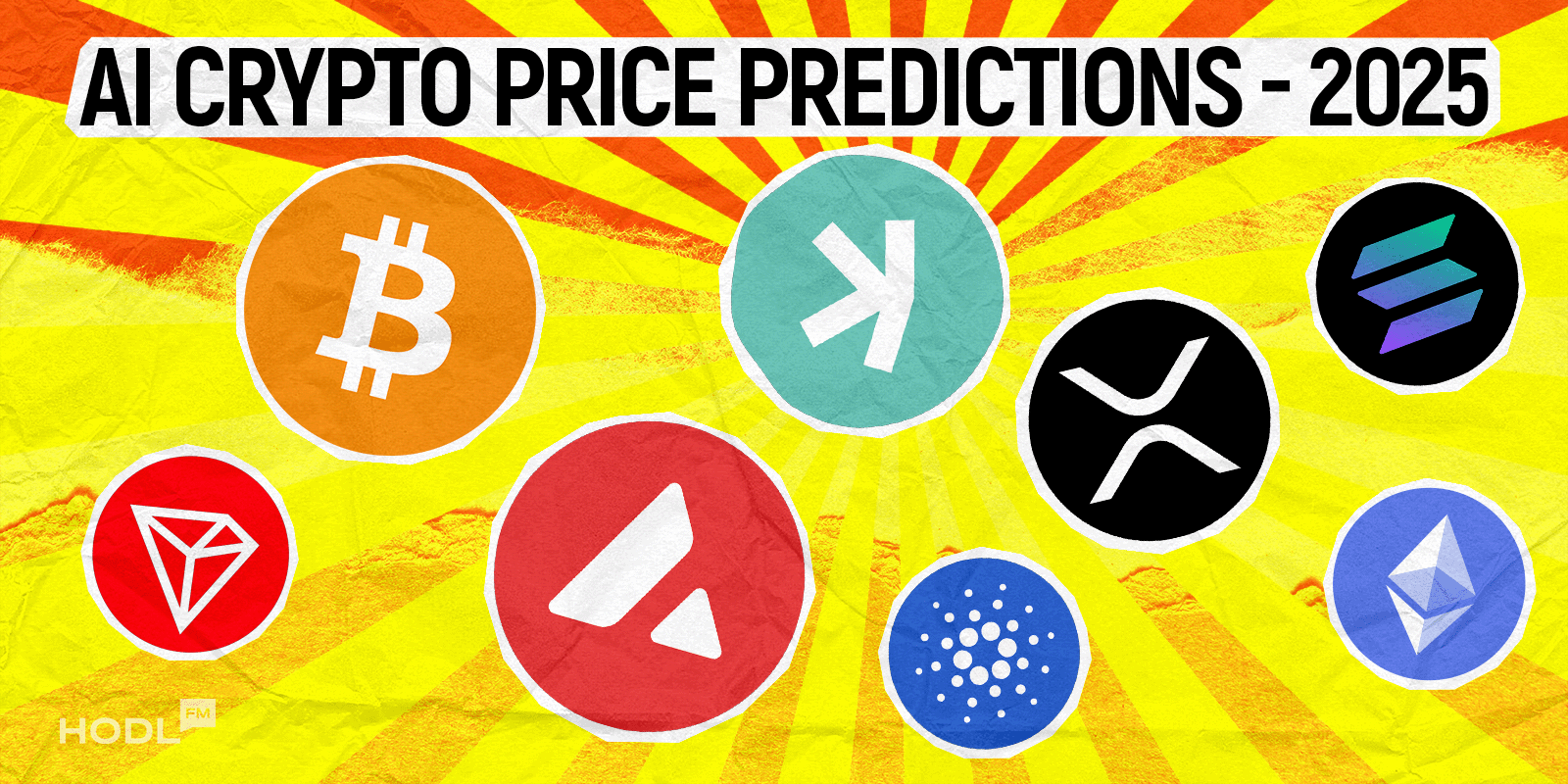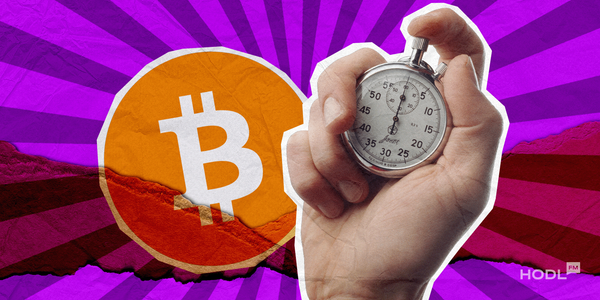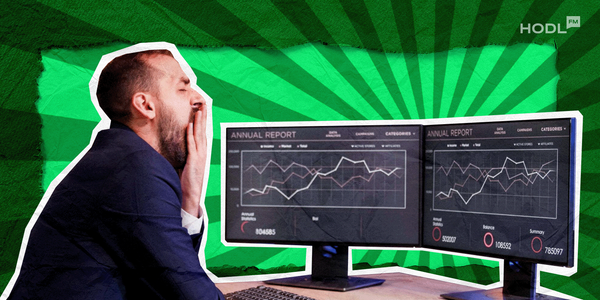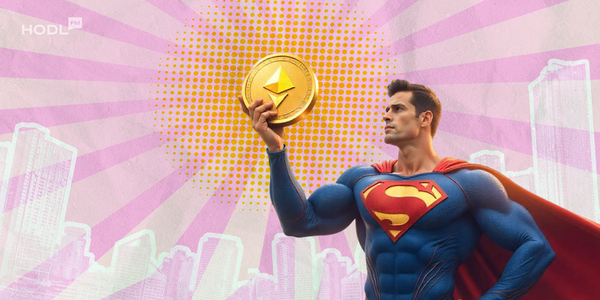Cardano is a proof-of-stake blockchain with big dreams of improving blockchain scalability and bringing about dApp development while consuming less power. It's a third-generation blockchain that wants to be everything the previous two generations were not.
Related: What is Ethereum? Explainer
In this article, we’ll tell you more about Cardano. You’ll learn about its history, the features of the Cardano network, and how different it is from other cryptocurrencies. We’ll also do a little Cardano price analysis and tell you if there’s a future in this blockchain.
What is Cardano (ADA)?
Cardano is a Proof-of-Stake (PoS) blockchain that is designed to be more sustainable and secure than earlier blockchains. The POS consensus mechanism consumes less power than Proof-of-Work (PoW) blockchains like Bitcoin, making Cardano more energy efficient.
While developing this blockchain, its developers ensured that all the technology they used was subject to rigorous peer review. This means nothing happened in the dark, as every move could be challenged by the community before it was implemented. This academia-like approach has made Cardano the resilient blockchain that it's known as today, as most future problems were detected on time.
As a third-generation blockchain, Cardano is better designed to handle scalability (a bigger crowd) than older blockchains. This blockchain also creates a suitable environment for decentralized applications (dApps) and smart contracts.
Cardano blockchain technology works with a two-layer architecture: the Cardano Computation Layer (CCL) and the Cardano Settlement Layer (CSL). The Cardano Computation Layer handles smart contracts and dApps, while the Cardano Settlement Layer handles all transactions and balancing of ADA.
Cardano community, we're curious:
— Cardano Foundation (@Cardano_CF) July 12, 2024
What's your favorite project built on the Cardano blockchain and why? Let us know below! 🗣️
If you need a refresher, explore our vibrant ecosystem here: https://t.co/EFoOsYdJH2
Cardano’s Native Cryptocurrency: ADA
ADA is the name of the native currency of the Cardano network. The name ‘ADA’ was derived from Countess Ada Lovelace, the 19th-century mathematician who worked on the Analytical Engine and saw its potential. She is also widely recognized as the first computer programmer.
ADA can be used to pay for services rendered on the Cardano blockchain and to make deposits on the blockchain. It’s also the currency in which the Cardano network hands out rewards. The smallest denomination of ADA is Lovelace, and 1 ADA = 1,000,000 Lovelaces.
As long as an individual holds ADA tokens, they automatically have a stake in the Cardano network. So, these tokens can be delegated to the stake pool to earn rewards and help in the successful running of the Cardano network. If you want to get ADA tokens, you can buy them with fiat or other cryptocurrencies at a cryptocurrency exchange.
History of Cardano
Cardano was founded by Charles Hoskinson in 2015 before it was launched officially in 2017. A fun fact is that Charles was actually on the team that was developing Ethereum.
However, he foresaw the limitations that the blockchain would face and left due to disagreements regarding that. When he left, he decided to establish a third-generation blockchain that would be better prepared to handle scalability issues. As such, Cardano considers itself an updated version of Ethereum, a third-generation platform to Ethereum’s second-generation credentials.
There have been many Cardno project updates and four hard forks throughout the development of this blockchain. Hard forks are a major change in the protocol or direction of the blockchain as a result of routine progress or maintenance. In extreme cases, hard forks arise out of disagreement in the blockchain community and can sometimes lead to the birth of a new blockchain.
The four hard forks that the Cardano has undergone include:
- Shelley hard fork: Moved Cardano from a federated Byzantine Fault Tolerance consensus mechanism to its current PoS mechanism.
- Alonzo hard fork: Introduced smart contracts to the blockchain.
- Vasil hard fork: Improved scalability, which also improved dApp functionality.
- Valentine hard fork: Provided support for other blockchain protocols and allows developers to build more efficient cross-chain applications.
Like all cryptocurrency projects, Cardano has its own roadmap, and this roadmap is the path to becoming a truly self-sustaining system. There are five stages in the Cardano development roadmap, and they are:
- First stage (Byron): Basic Cardano network goes live.
- Second stage (Shelley): Community-run networks are initiated and decentralization plans begin.
- Third stage (Goguen): Smart contracts are enabled.
- Fourth stage (Basho): Side chains are initiated to improve scalability and interoperability.
- Fifth stage (Voltaire): Bring about self-funding and governance for full decentralization.
How Does Cardano’s Blockchain Technology Work?
The Cardano blockchain technology is a proof-of-stake system. Unlike the proof-of-work mechanism, which sees miners race to be the first to solve cryptographic problems, the proof-of-stake mechanism works with stake pools. It uses the amount of stake (ADA) an individual has on the Cardano blockchain to determine consensus.
Since the blockchain doesn’t work under a single authority, the consensus protocol is what lays down the law. In simpler terms, it is the ruleset that governs the behavior of that blockchain.
Ouroboros: Cardano’s Proof-Of-Stake (PoS) Model
Ouroboros is the name given to the type of proof-of-stake consensus mechanism that Cardano works with. The name ‘Ouroboros’ comes from the mythical serpent in Greek or Egyptian methodology that is normally depicted devouring its tail. This action supposedly allows the serpent to be reborn in itself, making it effectively immortal.
The Cardano PoS model is believed to embody all the characteristics of Ouroboros, as it is energy-efficient, sustainable, and democratic. This PoS model works by choosing block validators based on the amount of ADA they have in their wallets.
So, instead of the unreal computing power that comes from stringing multiple gaming CPUs together, Cardano works with the amount of ADA staked. This makes Ouroboros require less energy to function and sees it providing greater scalability, with thousands of transactions processed per second.
Another interesting fact is that Ouroboros was the first provably secure blockchain protocol in the world. That is because of its mathematically verified mechanisms and the community-reviewed development process.
Can someone explain why they would buy ADA from 2023 onwards
by u/PrizeFar1032 in cardano
Smart Contracts on Cardano
Smart contracts appeared on the Cardano network in 2021 with the Alonzo update. It gave the Cardano community the first taste of the interoperability and scalability that they were promised.
Cardano smart contracts allowed platform developers to create dApps and Non-Fungible Tokens (NFTs). The smart contracts also provided a medium to manage the cryptocurrencies related to those dApps.
Cardano Staking and Rewards
We’ve already outlined that the Proof-of-Stake protocol works with stakes, and these stakes allow people to become validators on the network. The Cardano PoS mechanism requires interested individuals to pledge a certain amount of ADA to become validators. These staked ADA cannot be used, as they’re collateral that the Cardano network holds to ensure that validators are honest.
So why do community members insist on becoming validators when they lose access to their precious ADA? It's simple: the Cardano staking rewards are attractive enough for ADA holders to stake their assets.
Validators who successfully finalize blocks of transactions on the Cardano blockchain are rewarded with ADA. The amount of ADA they receive is based on the amount they staked in the staking pool.
These staking pools are simply one or more server nodes that Cardano trusts with validating transactions, updating ledgers, and opening new blocks. There are two types of staking pools on the Cardano network:
- Public pool: Rewards all members based on how much they’ve staked.
- Private pool: Rewards the sole owner or owners of the pool.
Cardano’s Governance Model
Cardano prides itself on operating a democratic platform where everyone’s voice is heard when it comes to running the platform. The Cardano governance model is the decentralized decision-making process that provides its blockchain community with control over future development.
This governance model has its basis in the ADA tokens that community members hold in their wallets. It allows the community to participate in the voting process and cast unchangeable votes when decisions are about to be made.
The movement to get everyone involved in the Cardano ecosystem growth is the goal of Voltaire. Voltaire is the final era or stage of the Cardano development roadmap, and it directly concerns the platform’s governance.
How Is Cardano Different from Other Cryptocurrencies?
As Cardano has crowned itself a third-generation blockchain, you might be wondering how much it differs from first and second-generation blockchains, right? In this section, we’ll give you answers by comparing Cardano to a first and second-generation blockchain.
Cardano vs. Bitcoin
Bitcoin is a first-generation blockchain that was designed for the purpose of peer-to-peer payments. Cardano, on the other hand, is a scalable blockchain that was designed to allow developers to create dApps and other tokens.
Cardano uses staked ADA to validate transactions due to its PoS system. Bitcoin uses the PoW protocol, which requires people to solve complex mathematical problems to mine cryptocurrency. Where the PoS system conserves energy, the PoW protocol is an energy-draining system.
Today, Bitcoin miners need to solve more complex problems than before to validate blocks. This means more computational power is needed today to become a Bitcoin miner. Cardano block validation, on the other hand, is much more accessible to the average individual, as the requirement is mostly owning ADA.
Cardano vs. Ethereum
Ethereum is a second-generation blockchain, and it also supports dApps and smart contracts like Cardano. It also works with a PoS system like Cardano.
Cardano and Ethereum are both platforms for building responsive applications, and they aim to build a connected system. You can think of it like a decentralized Google Play Store for dApps.
Should You Buy or Sell Cardano?
After going through all the features of the Cardano blockchain comes the age-old question: are you in or out? Is there any reason why you should spend your limited funds to buy ADA? Well, Cardano has all the makings of a reliable blockchain, so there are many reasons to buy ADA tokens.
- Community support: You won’t find a successful blockchain today without a strong community behind it. Cardano is a blockchain with a dedicated community and active developers who are working tirelessly to improve the blockchain.
- Social and economic mover: Cardano has been making positive changes to the environment since it appeared. It has fought for human rights, pushed for environmental sustainability, provided education for millions, and provided access to financial services. You can say that it’s the good guy who is good for the sake of being good.
- Strong financial capability: ADA price analysis will show you how far this cryptocurrency has come, ultimately selling for $3.10 in 2021. This might not be much compared to the likes of Ethereum, but it's a 6,000% increase from its starting price of $0.05.
What Is the All-time High Price for Cardano?
Going through ADA cryptocurrency updates shows that its all-time high price was $3.16. The price of ADA reached this value on 2nd September, 2021.
Does Cardano Have a Future?
A quick look at ADA price analysis will show you that Cardano is currently far from its all-time high. Nonetheless, this token has seen a 33.12% increase in the past year, showing that it hasn’t given up climbing higher.
Apart from ADA token news, the Cardano blockchain has never let up on innovating new features and enhancements. There’s always ongoing research to improve scalability, achieve full decentralization, enhance interoperability with other blockchains, and much more. So, yes, Cardano has a future, one that’s worth betting on.
Is Cardano a Good Investment Now? Exploring the Future of ADA.
by u/j__andoni in cardano
Cardano is a PoS blockchain that was launched in 2017 and seeks to tackle scalability, interoperability, security, and full decentralization issues. It's an ambitious blockchain project, for sure, but when coupled with an active community and peer-reviewed developments, it doesn’t seem so impossible.
FAQs about Cardano (ADA)
What Can ADA Be Used For?
ADA can be used to pay for services that are rendered on the Cardano network. It’s also the medium in which Cardano staking rewards appear.
Why Is Cardano Better than Bitcoin?
Cardano is better than Bitcoin as it requires less power to mine it, nor does it require expensive computational power to get started. It’s also much faster than the Bitcoin blockchain, offers better security, and supports decentralized application development.
Can ADA Be Used as Currency
Yes, ADA can be used like any other cryptocurrency to pay for services on platforms that support cryptocurrency payments. It can also be exchanged with other cryptocurrencies at a crypto exchange.

Disclaimer: All materials on this site are for informational purposes only. None of the material should be interpreted as investment advice. Please note that despite the nature of much of the material created and hosted on this website, HODL FM is not a financial reference resource and the opinions of authors and other contributors are their own and should not be taken as financial advice. If you require advice of this sort, HODL FM strongly recommends contacting a qualified industry professional.




